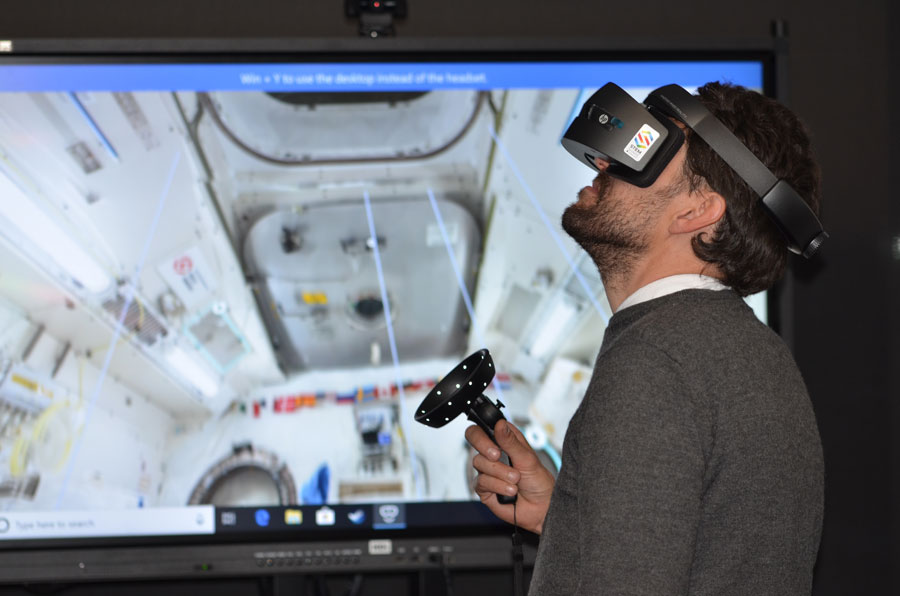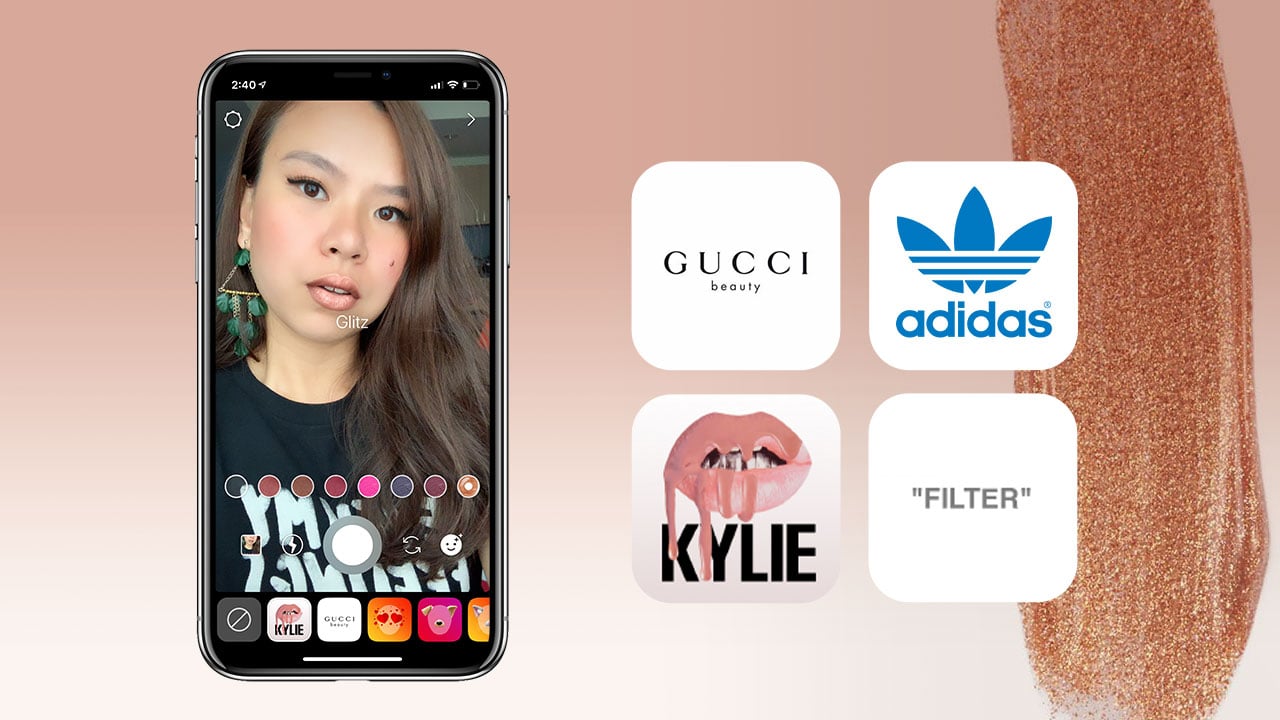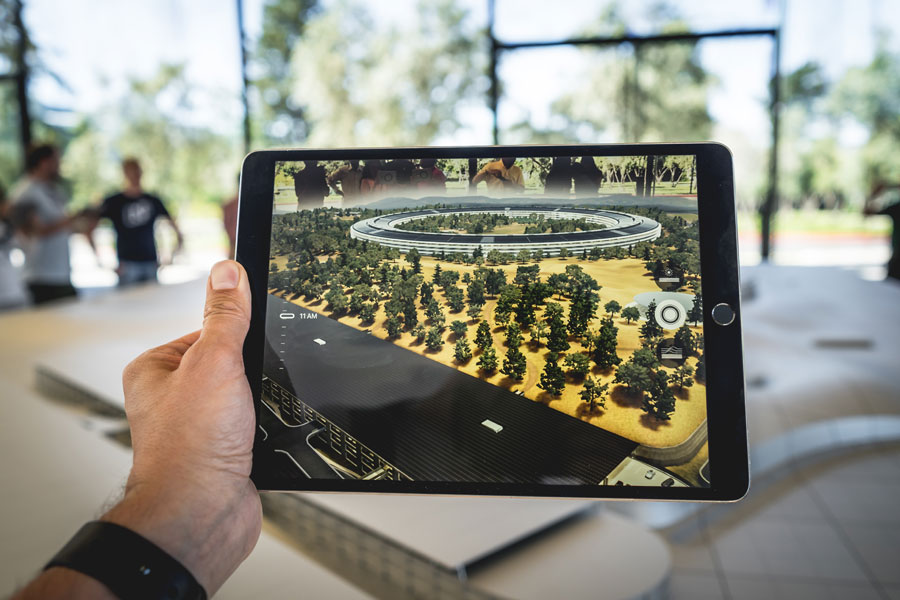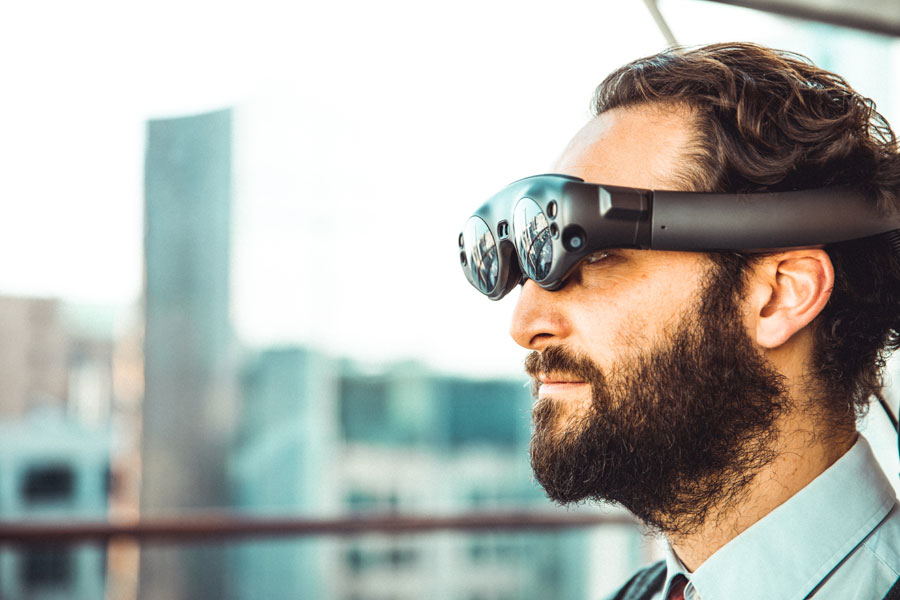A few days ago we had the opportunity to collaborate with Canal Innovación, Sacyr’s blog on technology and R + D + i, to contribute our vision and opinions on the level of adoption that widespread reality is reaching among the general public.
Accustomed to working and talking about projects generally oriented to the field of large companies, it has been a pleasant experience to reflect on the other side of the coin: the use of virtual, augmented and mixed reality among private users.
We believe that the conclusions drawn from the analysis are interesting and that is why we want to share with you the full interview that will soon be published on the Sacyr online channel.
Will the use of these technologies be generalized among private users? When?
The generalization of these technologies at the user level is experiencing a slower process than expected four or five years ago. When the first virtual reality (or VR) devices appeared then, a certain media bubble was generated that spoke of astronomical figures and a massive adoption of extended reality that today is far from being fulfilled. At least at the user level.
However, this does not mean that these technologies are not growing and occupying an increasing market share. The adoption process is constantly progressing and it already exceeds figures that allow us to speak of a consolidated technology. In fact we are seeing how some uses of this technology, such as filters in augmented reality, are having great success, and how the brands themselves have seen a vein there for their potential customers to use this technology to “test” their items. and share them on various social platforms.
Regarding virtual reality, 2019 has seen enormous growth compared to previous years in the gaming sector thanks to the latest devices that have come onto the market, with possibilities that each year double or triple the benefits of previous years in terms of to quality and immersion of experiences.
Of the three technologies that make up the extended reality – virtual, augmented and mixed – it is the latter that at the user level lags behind, largely because it is the most recent of them all, but above all because the few developing companies The hardware necessary for its use is much more focused on the professional field than on entertainment.

What do private users use these immersive techniques for today?
In the case of virtual reality, its use is mainly leisure and entertainment, highlighting especially gaming.
But there are also more everyday applications through augmented reality that, due to their ease of use, are spreading very quickly. The creation of the AR Core software for Android devices and the AR Kit for Apple has played an essential role in this, which have facilitated the work of the developers, which has materialized in the appearance of numerous apps available in the different stores . We are talking about applications for education, decoration, astronomy, etc. that allow combining reality with digitized elements to live much more intense experiences from practically any mobile device.
What are the main limitations for the use of these technologies to become widespread?
If for example we talk about virtual reality, less than two years ago we could argue issues such as the high price, the limited quality of experiences or the discomfort of the devices themselves. But the truth is that these handicaps have been disappearing recently thanks to the rapid advances that developers are applying to their devices.
For example, today we can buy Oculus Quests that offer autonomy, a great quality of vision and a huge catalog of applications, for less than € 450, half of what a high-end phone costs. The problem is fundamentally the barrier to entry, users still find it difficult to acquire such a device, although those who try it become addicts and evangelists of virtual reality.
Another thing is mixed reality. There are only a couple of models on the market and with a price and a catalog of applications that places them on a spectrum far from the general public.
What are the applications that have been the most successful so far among private users?
In the virtual reality sector, the leading application this year has been Beat Saber, a game that combines physical skills and music, and which has exceeded one million units sold in Oculus.
As for augmented reality, we have already mentioned the great boom that social filters are experiencing on Facebook, Instagram and Snapchat, but there are also numerous AR games that are already among the top positions in the most downloaded applications in Apple stores and Google. This is the case of the well-known Tik Tok or the children’s game Leo AR.

Apart from entertainment, in which other fields do these users use or will these technologies use?
Little by little the AR is opening a gap between the different daily uses, as we see in the recent implementation that Google Maps has made thanks to which we can use augmented reality to help us orient ourselves while we are walking.
Applications for education are also beginning to find their place in the market, which thanks to the combination of a real element such as a textbook that acts as a marker, facilitates the detailed display of the object in an enlarged way. study. This is the case of Complete Anatomy, an app for the study of the human body that is having great success and is used repeatedly in schools in the United States, or Night Sky to discover the constellations.
Brands have also seen a great opportunity in this field to boost their sales. This is the case of Ikea, which in 2017 presented Ikea place, an application with which we can place the furniture from its catalog in any room of our house and check how they would look before buying them.

What is the strength of these technologies in the fields mentioned in the previous question?
Both the immersion capacity that virtual reality allows and that extra layer of information that we find in augmented reality are probably the two main added values that these technologies offer us, and that make us enjoy experiences in a much more intense than with any other current technology.
How have virtual, augmented and mixed reality devices changed in recent years?
In recent years there has been a revolution in each and every one of the fields that make up the extended reality thanks to the different technical advances that we have recently known.
In the case of virtual reality, the biggest leap has undoubtedly been the appearance of stand-alone devices, which are those VR glasses that do not need to be connected to a wired computer or need a mobile device as a processor. This has brought more powerful and comfortable devices to the market as the user enjoys greater autonomy, only limited by the limitations of the physical space in which we find ourselves, which has meant a notable improvement in the lived experience.
For its part, augmented reality has also experienced great advances both in software (with the aforementioned AR Core and AR Kit softwares) and in hardware with facial recognition incorporated into the cameras of the latest Smartphone models. This, on the one hand, has given developers the necessary tools to create new and better applications and, on the other, the possibility of spreading much more massively among users.
Finally, in terms of mixed reality, 2019 has seen the launch of two high-quality devices: Magic Leap and Microsfot Holollens 2. Although it must be said that this technology is the one that is furthest from price and use, since it is today almost exclusively focused on professional use for companies.

Why have these immersive techniques penetrated more strongly in companies than in the general public?
That companies are the first to adopt a new technology is a constant that has been taking place since the so-called digital revolution began. We already saw it at the beginning of the internet or even in mobile telephony, which had its first success stories in the military and business spheres and already in a second phase among the general public.
If before we talked about augmented reality being the one that was experiencing the greatest success among users, in the business case the tables are reversed and it is virtual reality, and to a lesser extent mixed reality, the technologies that are having the greatest implementation.
The reason is simple, these immersive technologies represent great cost and time savings in many technical or research fields. Some cases in which isostopy has developed solutions for large companies has been the training of qualified workers or in high-risk environments. Thanks to VR, they can carry out a large part of this training in a completely realistic environment where the operator will be able to familiarize himself with his tasks without the costs or dangers that would have to have to carry out this training in the real work environment.
Another field in which we usually collaborate is the architectural field for the visualization of the final project. Large companies in the industrial field have also had a virtual reality department for their daily tasks for a long time, such as allowing engineers to guide technicians, who may be located thousands of kilometers away, who carry thousands of kilometers, who carry parts. mixed reality glasses.
And of course the field of marketing, which has found in augmented reality a vein for viral campaigns that is representing a real revolution for marketing departments.
Will users use these immersive techniques in their daily lives in the future? For what? What can they do that is unthinkable today?
It is difficult to predict what will happen in a few years with such a changing technology and that it is advancing at breakneck speed. There are certain issues that were taken for granted years ago that were going to be everyday today but that are still science fiction at the moment.
If we did a fortune-telling exercise, many experts agree that mixed reality will be the prevailing technology tomorrow and that it will even overtake mobile devices. According to these predictions, we will all have a small device of great comfort that we will wear in front of our eyes as glasses, which will allow us to interact with the physical environment that surrounds us by superimposing various layers of information.
Let’s imagine for example that we can go down the street with our virtual assistant, who walks by our side avoiding the obstacles that he encounters while reminding us that we have a meeting at 12 o’clock or indicates which street we have to take to get to the hairdresser earlier, according to the traffic. It sounds like science fiction, but if in the early 2000s we had told ourselves that our mobile phones were going to be computers from which we were going to be able to do almost anything, we would not have believed it either.


